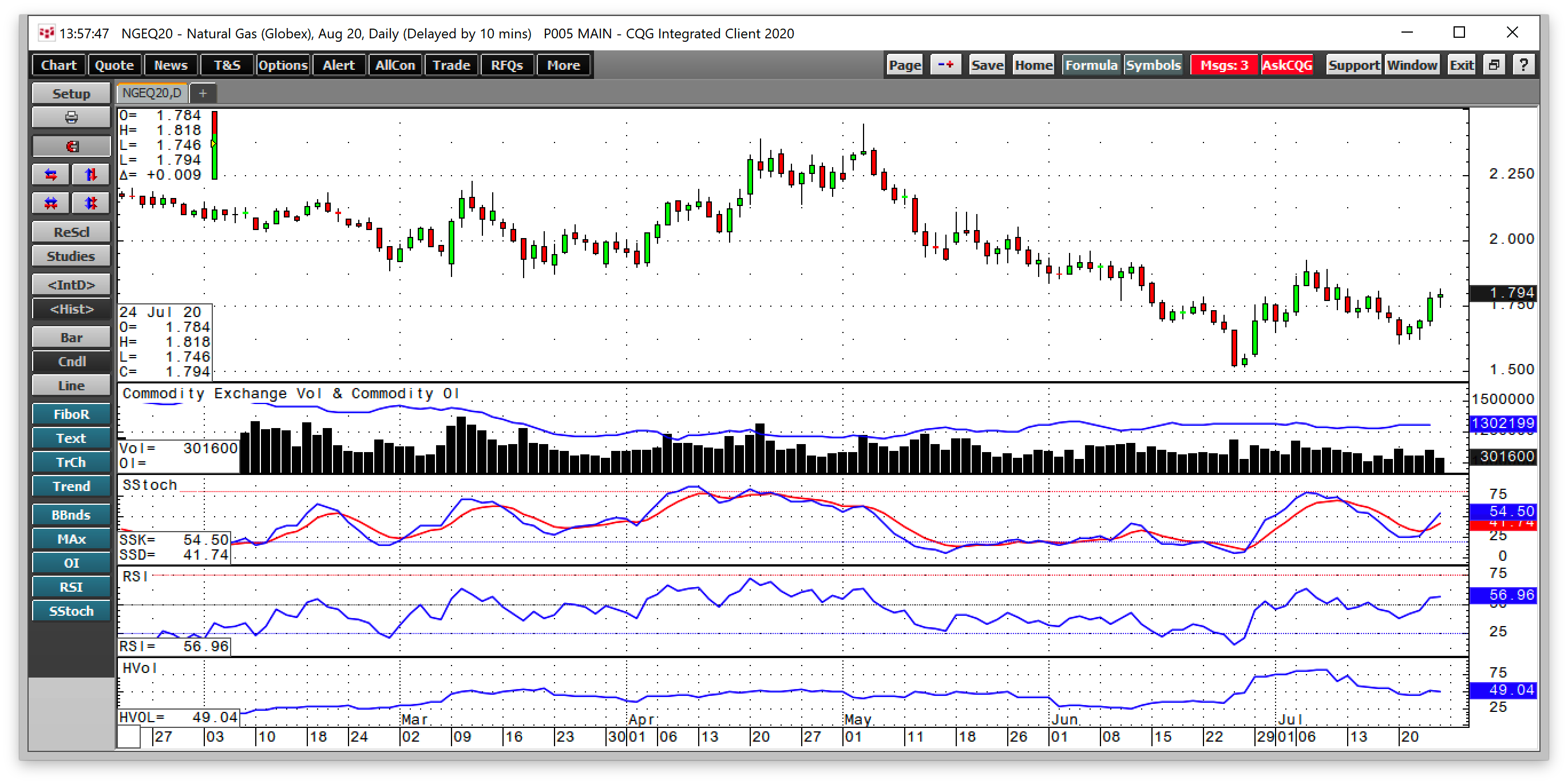The term structure in a commodities market can tell us a lot about supply and demand fundamentals and seasonality. In the natural gas market, the price tends to reach its peak as the winter season approaches. During the winter months, inventories decline as the demand for heating increases. The withdrawal season tends to run from November through March each year. From March through October, stockpiles build in anticipation of the demand season.
At the end of July 2020, stockpiles are significantly above the level seen at the same time in 2019 and over the past five years. It seems likely that the total amount of natural gas in storage across the United States will rise above the four-trillion-cubic-feet level by the time November rolls around. It will only be the third time stockpiles rose to that level.
The spread that reflects the prices for delivery in August 2020 versus January 2021 is in contango. The delivery date is trading at a far higher price than for nearby delivery. The spread reflects both seasonality and the high level of stocks. The United States Natural Gas Fund (NYSE:UNG) follows the price of natural gas higher and lower.
Natural Gas Moves Higher After Another Small Injection
Last Thursday, the Energy Information Administration reported the fourth consecutive decline in injections into storage across the United States. The build of 37 billion cubic feet was a sign of falling production, and the natural gas futures market moved higher in the aftermath of the report.

Source: CQG
As the chart highlights, the August futures rallied to over $1.80 per MMBtu in the aftermath of the weekly inventory data. Technical support is now at $1.605 and $1.517, with resistance at $1.924 per MMBtu.
Price momentum turned higher but was over a neutral reading at the end of last week. Relative strength moved above neutral territory. Open interest, the total number of open long and short positions in the futures market has been steady at 1.302 million contracts. The metric has been on either side of 1.3 million contracts since early June. Daily historical volatility at just over 49% fell from over 82% on July 9 as the daily trading ranges narrowed.
The August-January Spread Reflects Plenty Of Supplies
We are about to move into August, which puts the natural gas market one step closer to the 2020/2021 winter season. Natural gas tends to peak each year in January as the demand for heating reaches a high during the heart of winter.

Source: CQG
The chart of natural gas futures for delivery in January 2021 minus August 2020 shows that the January futures were trading at a premium of $1.099 per MMBtu at the end of last week. The premium of 60.8% reflects the high level of stockpiles that could reach four trillion cubic feet in November. At that level, there will be plenty of natural gas available to meet all requirements during the upcoming winter season.
Contango In Natural Gas A Function Of Seasonality
The contango, or premium for forward delivery in January 2021 versus August 2020, is because of seasonal factors. While nearby natural gas was trading around the $1.80 per MMBtu level at the end of last week, the January futures at nearly $2.90 per MMBtu make it expensive to positions on the long side for the upcoming winter season.
With stockpiles at such a high level in July, I would not be a buyer of the January contract. However, on price dips, I continue to favor the nearby August or September futures from a risk-reward perspective. I would look for a 1:2 risk versus reward ratio on any long position. I believe that the nearby price will eventually move back to the $2 level or a bit higher, but the level of stocks will prevent natural gas from running away on the upside over the coming weeks and months.
